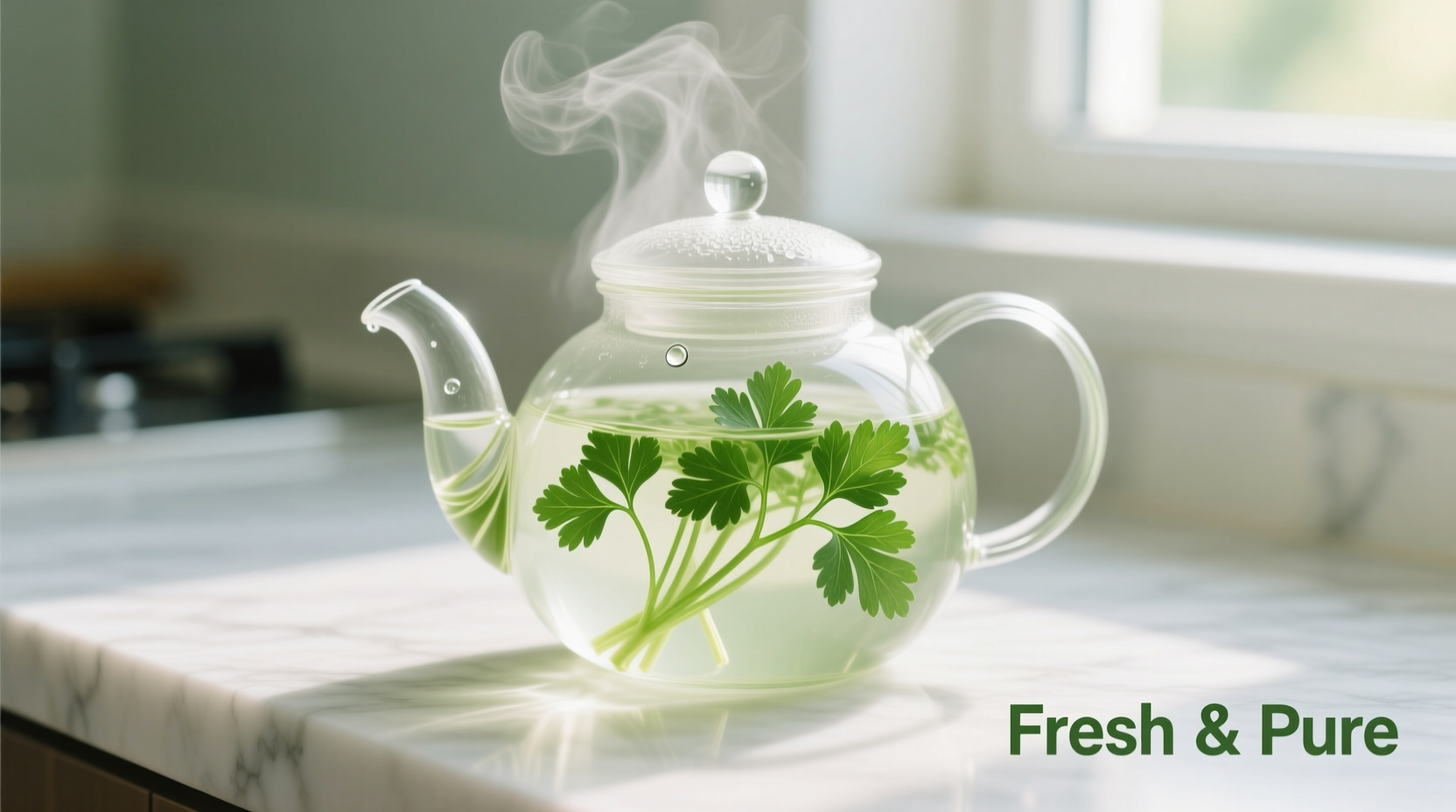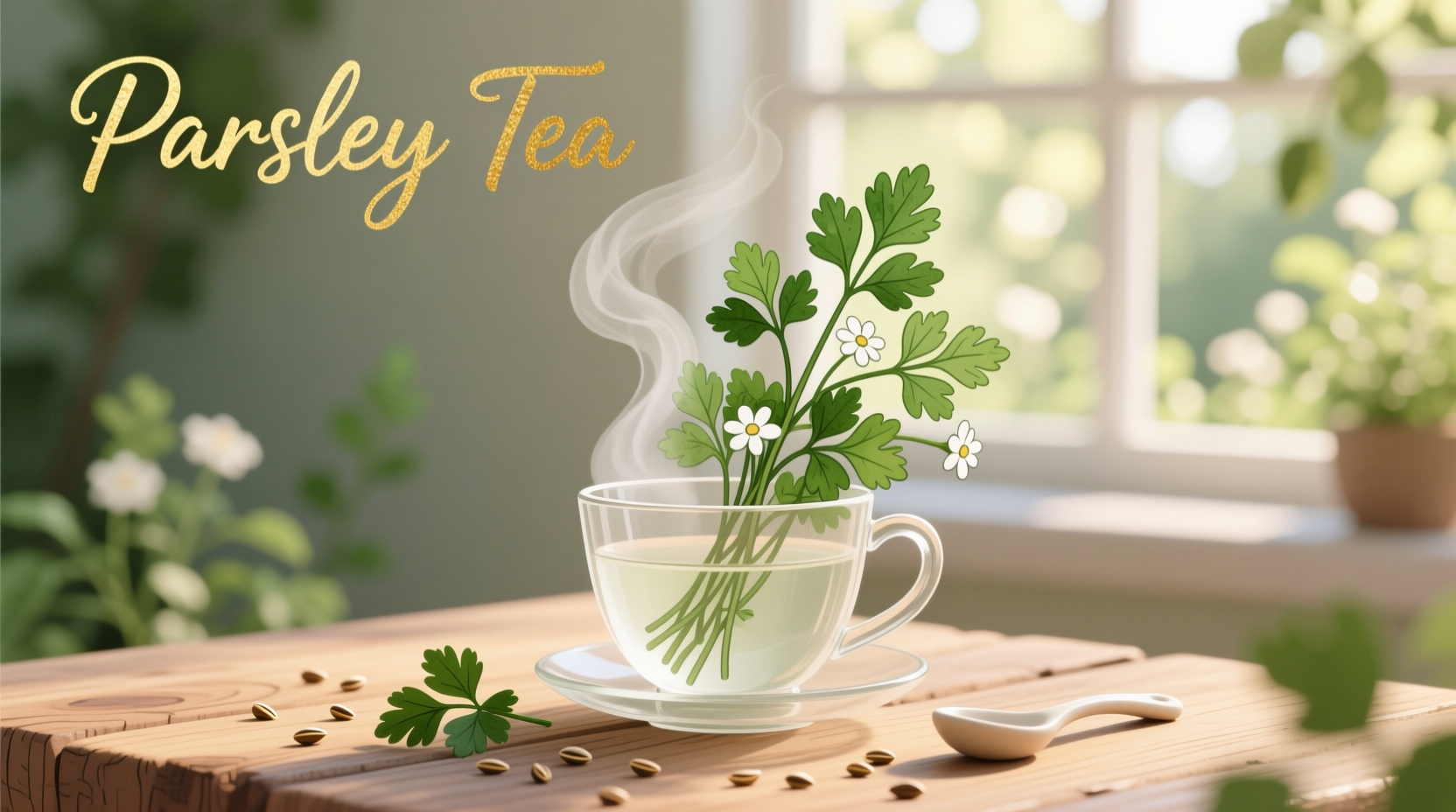Quickly brew fresh parsley tea in just 10 minutes using fresh parsley, boiling water, and optional lemon or honey. This simple herbal infusion offers hydration plus vitamin K, vitamin C, and antioxidants with potential kidney and inflammation benefits when consumed in moderation.
Discover how to transform this common kitchen herb into a revitalizing beverage that's been used in traditional wellness practices for centuries. Whether you're exploring natural hydration options or seeking gentle digestive support, homemade parsley tea delivers a refreshing alternative to conventional teas without caffeine or artificial ingredients.
Why Parsley Tea Deserves a Place in Your Wellness Routine
Often relegated to a plate garnish, parsley packs surprising nutritional value. According to the USDA FoodData Central, just one cup of fresh parsley contains more than 100% of your daily vitamin K requirement and significant vitamin C. When brewed as tea, these nutrients become readily available in liquid form.
Research published in the Journal of Agricultural and Food Chemistry confirms parsley contains apigenin and other flavonoids with antioxidant properties. While not a medical treatment, incorporating parsley tea as part of a balanced diet may support overall wellness.
| Preparation Method | Flavor Profile | Nutrient Extraction | Best For |
|---|---|---|---|
| Hot infusion (boiling water) | Bright, grassy, slightly bitter | High vitamin C and K extraction | Daily wellness routine |
| Cold brew (room temperature) | Milder, sweeter, less bitter | Preserves heat-sensitive compounds | Sensitive stomachs |
| Double infusion (re-steeped) | Stronger, more concentrated | Maximum nutrient extraction | Therapeutic applications |
What You'll Need for Perfect Parsley Tea
Gathering these simple ingredients ensures optimal flavor and benefits:
- Fresh parsley (15-20 sprigs) - flat-leaf (Italian) parsley contains higher nutrient levels than curly varieties
- Filtered water (2 cups) - improves taste and prevents mineral interference
- Small saucepan with lid - glass or stainless steel preferred
- Fine mesh strainer - captures small leaf particles
- Mugs (heat-resistant)
Optional enhancements:
- Lemon wedge (boosts vitamin C absorption)
- Raw honey (adds soothing properties)
- Fresh ginger slice (adds digestive benefits)

Step-by-Step Brewing Guide for Maximum Benefits
Preparation Phase: Setting Up for Success
- Wash thoroughly - Rinse parsley under cool running water for 30 seconds to remove soil and residues
- Trim carefully - Remove any yellowing leaves but keep stems (they contain valuable nutrients)
- Chop lightly - Gently bruise leaves and stems to release essential oils (avoid over-chopping which creates bitterness)
Brewing Process: Timing is Everything
- Heat water - Bring filtered water to rolling boil (212°F/100°C), then let sit 30 seconds to reach optimal 200°F (93°C)
- Steep properly - Place parsley in teapot, pour hot water over herbs, cover immediately, and steep for exactly 5-7 minutes
- Strain promptly - Remove herbs after recommended time to prevent over-extraction of bitter compounds
Professional tip: For stronger flavor without bitterness, try a double infusion - steep for 4 minutes, remove herbs, then add fresh parsley for another 3 minutes.
When Parsley Tea Works Best (and When to Skip It)
Understanding context boundaries ensures safe, effective use:
- Ideal for: Daily hydration, post-meal digestion support, supplementing vitamin K intake (particularly for those not on blood thinners)
- Limit consumption if: Pregnant (may stimulate uterine activity), taking blood thinners (vitamin K interaction), or have kidney disease (high potassium content)
- Maximum safe daily amount: 2-3 cups according to the National Center for Complementary and Integrative Health
- Best consumed: Between meals (not with calcium-rich foods which can bind with parsley's nutrients)
Three Delicious Variations to Try
Citrus-Infused Detox Blend
Add one orange slice and lemon wedge during the last 2 minutes of steeping. The citrus enhances parsley's natural diuretic properties while balancing flavor.
Ginger-Parsley Digestive Aid
Include 3 thin ginger slices with the parsley. Ginger's active compounds work synergistically with parsley for improved digestion, as noted in Phytotherapy Research.
Cold-Brew Overnight Refreshment
Combine parsley and room-temperature water in a glass jar, refrigerate for 8-12 hours. This method produces a smoother, less bitter tea perfect for hot days.
Storage and Freshness Tips
For best results:
- Consume immediately for maximum nutrient retention
- Refrigerate leftovers in airtight container for up to 24 hours
- Do not freeze - damages delicate compounds
- Never reboil - degrades beneficial components
Important Considerations Before Regular Consumption
While generally safe, parsley tea isn't appropriate for everyone. The National Library of Medicine notes that excessive consumption (more than 3 cups daily) may cause:
- Kidney irritation in sensitive individuals
- Photosensitivity (increased sunburn risk)
- Drug interactions with diuretics or blood thinners
Consult your healthcare provider before making parsley tea a regular part of your routine if you have existing health conditions or take medications.
Enjoy Your Homemade Parsley Tea
Serve warm in your favorite mug, optionally adding a touch of raw honey or lemon. The vibrant green hue and fresh aroma make this simple beverage a sensory pleasure beyond its potential wellness benefits. By following these precise preparation methods, you've transformed ordinary kitchen parsley into a nourishing herbal infusion that connects you with centuries of traditional wellness practices.











 浙公网安备
33010002000092号
浙公网安备
33010002000092号 浙B2-20120091-4
浙B2-20120091-4